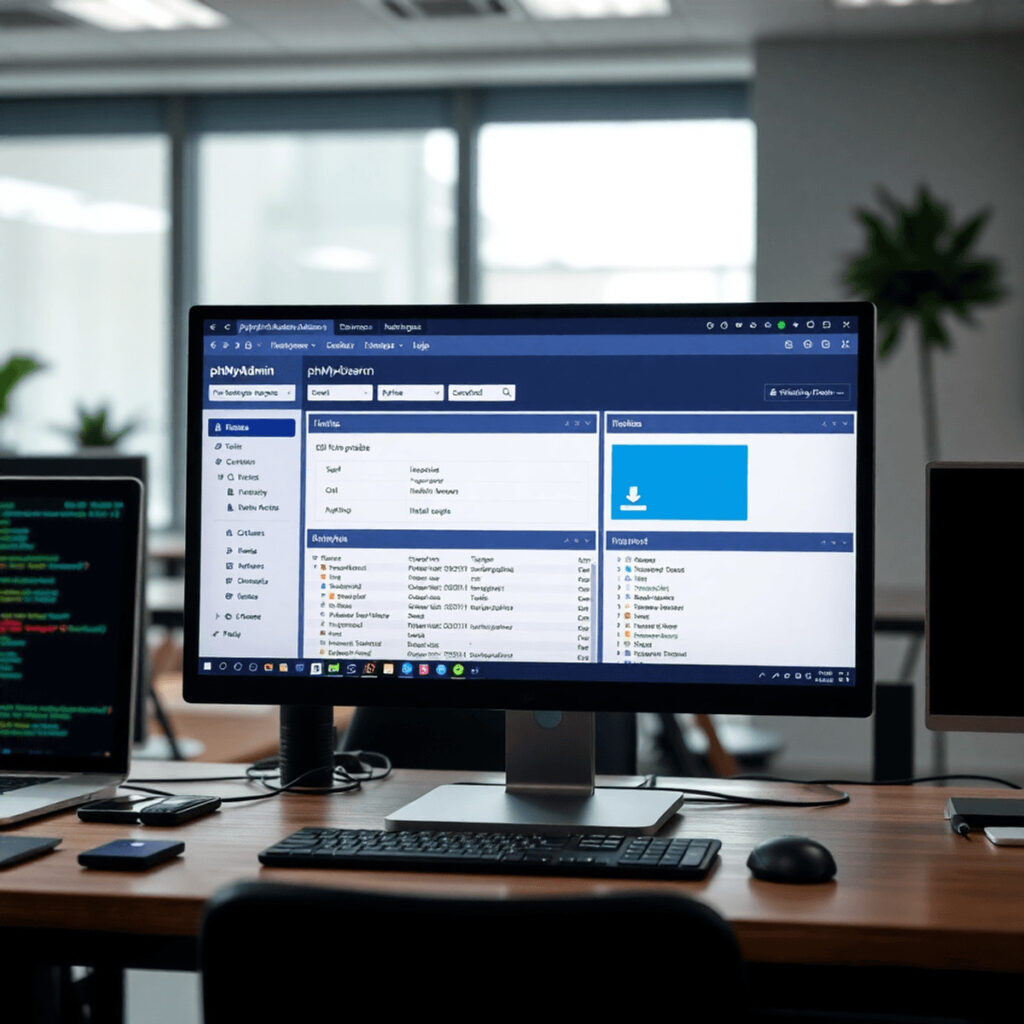Apache Tomcat is a widely-used open-source web server and servlet container that plays a critical role in deploying Java web applications. Its compatibility with various Java specifications like JSP, Servlets, and WebSocket has made it an essential tool for developers working with Java-based projects.
One common issue developers encounter is the error message: “Server Tomcat v9.0 Server at localhost failed to start.” This error can occur in environments such as Eclipse and significantly disrupt development workflows. The inability to start the server affects testing, debugging, and overall project progress, making it crucial to resolve this issue promptly.
In this article, you will learn:
- The underlying causes of the “server failed to start” error.
- Common solutions including addressing port conflicts and corrupted workspace files.
- Advanced troubleshooting techniques like checking logs and cleaning up resources.
- When to consider reinstalling Tomcat as a last resort.
- Best practices for preventing future startup issues with Tomcat v9.
Understanding these aspects will equip you with the knowledge needed to troubleshoot effectively and minimize downtime in your development cycles.
Understanding the Causes of the Error
The “failed to start” error in Tomcat v9 often arises due to various underlying issues that prevent the server from launching correctly. These server startup issues can be particularly prevalent in development environments such as the Eclipse IDE.
What Triggers the “Failed to Start” Error?
Several factors may trigger this error:
- Port conflicts: When the default HTTP port (8080) or shutdown port (8005) is already occupied by another process.
- Corrupted workspace files: Metadata files within your Eclipse workspace can become corrupted, causing startup failures.
- Incorrect JRE configuration: Mismatched or improperly configured Java Runtime Environment settings.
- Project configuration issues: Errors within project files, such as
web.xmlor missing dependencies.
Common Environments
This error is commonly encountered in development setups that use:
- Eclipse IDE: A popular integrated development environment for Java developers. Configuration discrepancies within Eclipse often lead to Tomcat startup problems.
Importance of Identifying the Root Cause
Identifying the root cause is crucial for effective troubleshooting. By understanding what specifically triggers the error, you can apply targeted fixes, reducing downtime and improving your development workflow.
Common Causes and Solutions for the Error
1. Port Conflicts
Port conflicts are a primary cause of the “Server Tomcat v9.0 Server at localhost failed to start” error. This usually occurs when the HTTP port (default is 8080) or the shutdown port (default is 8005) is already in use by another process.
To resolve port conflicts, you can:
- Check for Running Processes: Use the
netstatcommand to determine if ports 8080 or 8005 are currently in use. - bash netstat -an | find “8080” netstat -an | find “8005”
- Kill Conflicting Processes: If you find a process using these ports, you can terminate it using the
taskkillcommand on Windows orkillcommand on Unix-based systems. - For Windows:
- bash taskkill /F /PID <process_id>
- For Unix-based systems:
- bash kill -9 <process_id>
Restart Tomcat after ensuring that no other processes are using these critical ports.
2. Corrupted Workspace Files
Another common cause of startup failure is corrupted workspace files in Eclipse. These corrupted metadata files can obstruct Tomcat’s ability to start correctly.
Steps to resolve this issue include:
- Identify Problematic Files: Navigate to your Eclipse workspace directory and locate the problematic metadata files within
<workspace-directory>/.metadata/plugins/org.eclipse.core.resources. - Delete Corrupted Files:
- plaintext /.metadata/.plugins/org.eclipse.core.resources/.snap
- Also, check and clear temporary files located in:
- plaintext /.metadata/.plugins/org.eclipse.wst.server.core/tmp*
- Restore Workspace Settings: After deleting these files, restart Eclipse and allow it to regenerate necessary metadata. This can help in restoring a clean state for your workspace.
Restoring workspace settings ensures that all configurations are reloaded afresh, eliminating any corrupt data that might have been causing issues.
By addressing these common causes systematically, you enhance your chances of resolving the Tomcat startup issue swiftly.
Additional Common Causes and Their Fixes
3. Incorrect JRE Configuration
Mapping the correct Java Runtime Environment (JRE) in Eclipse is crucial for Tomcat server operations. An incorrect JRE configuration can lead to the “Server Tomcat v9.0 Server at localhost failed to start” error. Ensuring your Tomcat server utilizes the appropriate JDK 1.8 or another compatible version is essential.
Steps to Check and Change JRE Settings in Eclipse:
- Open Eclipse Preferences:
- Navigate to
Window>Preferenceson Windows/Linux orEclipse>Preferenceson macOS.
- Access Installed JREs:
- Go to
Java>Installed JREs.
- Verify Current JRE:
- Ensure the correct JRE, such as JDK 1.8, is listed and selected.
- Add a New JRE if Necessary:
- Click on
Add, choose the appropriate JRE type (e.g., Standard VM), and provide the path to your JDK installation.
- Configure Tomcat to Use the Selected JRE:
- Go to
Serversview in Eclipse. - Right-click on your Tomcat server instance and select
Properties. - Under the
Runtime Environmentsection, ensure the correct JRE is selected.
4. Project Configuration Issues
Errors within your web application project can also prevent Tomcat from starting properly. Common issues include misconfigurations in deployment descriptors such as web.xml, missing dependencies, or incorrect build paths.
Key Areas to Validate:
- web.xml File:
- Check for syntax errors and ensure all necessary servlet mappings and context parameters are correctly defined.
- Project Dependencies:
- Verify that all required libraries and dependencies are included in your project’s build path.
- Build Path Configuration:
- Ensure that source folders, libraries, and output folders are correctly configured in your project’s properties.
These steps can help identify and resolve issues related to incorrect configurations in Eclipse, providing a robust setup for your Tomcat server operations.
Advanced Troubleshooting Techniques for Startup Issues
Checking Logs for Errors
Logs play a crucial role in diagnosing startup issues with Tomcat. They provide detailed insights into what might be going wrong when the server fails to start.
Accessing Tomcat Logs
You can find the logs in the logs directory of your Tomcat installation. Key files to look out for include catalina.out, localhost.log, and manager.log.
Interpreting Log Files
Open these log files with any text editor and look for ERROR or WARN messages. These entries often point directly to the root cause of the issue. For example, an error message indicating “Port already in use” clearly suggests a port conflict.
plaintext SEVERE [main] org.apache.catalina.core.StandardService.initInternal Failed to initialize connector [Connector[HTTP/1.1-8080]] java.net.BindException: Address already in use :8080
By examining these logs, you can identify specific error messages that guide you toward the necessary fixes.
Cleaning Up Resources in Eclipse
Eclipse can sometimes retain old configurations or corrupted instances that may prevent Tomcat from starting properly. Cleaning up these resources is a practical step towards resolving such issues.
Removing Old Servers
- Navigate to the Servers tab within Eclipse.
- Right-click on any old or unused server instances and select Delete.
Creating a New Server Instance
- Go to File > New > Other.
- Select Server > Server and click Next.
- Choose the appropriate version of Apache Tomcat and follow the prompts to configure it afresh.
This process helps eliminate any lingering configuration problems that might be affecting your current setup, providing a clean slate for your server operations.
These advanced troubleshooting techniques—examining Tomcat logs and cleaning up resources in Eclipse—equip you with practical methods to identify and resolve startup issues effectively.
When All Else Fails: Reinstalling Tomcat as a Last Resort
Sometimes, despite trying various troubleshooting methods, the issue persists. In these scenarios, uninstalling Tomcat and then reinstalling it can provide a clean slate.
When to Consider Reinstallation
- Persistent startup issues despite resolving port conflicts, fixing workspace files, and correcting JRE configuration.
- Suspected corruption or misconfiguration within the Tomcat installation directory.
Steps for Uninstalling and Reinstalling Apache Tomcat Server
- Stop the Server: Ensure that Tomcat is not running. Use commands like
shutdown.bat(Windows) orshutdown.sh(Unix-based systems). - Delete the Installation Directory: Remove the entire Tomcat directory to eliminate any corrupted files.
- Clean Up Eclipse Configurations:
- Navigate to the Servers view in Eclipse.
- Right-click on the existing Tomcat server and select Delete.
- Check for any lingering configurations in
<workspace-directory>/.metadata.
- Download and Install a Fresh Copy:
- Visit the Apache Tomcat website.
- Download the latest stable release of Tomcat v9.
- Extract and set up in a new directory.
- Reconfigure in Eclipse:
- Go to Window > Preferences > Server > Runtime Environments.
- Add a new server runtime environment pointing to your new Tomcat installation.
By reinstalling Apache Tomcat Server, you eliminate potential unknown issues within the previous setup, giving you a fresh start to troubleshoot effectively.
Best Practices for Preventing Future Startup Issues with Tomcat v9
Configuring DataSource within a Spring Application on Tomcat Servers
Proper DataSource configuration is crucial for ensuring smooth operations of your Spring applications on Tomcat servers. Follow these best practices to avoid common pitfalls:
Use JNDI (Java Naming and Directory Interface)
Integrating Spring with Tomcat’s JNDI support allows you to define your DataSource in the context.xml file of your web application, promoting better separation of configuration and code.
xml
Spring Configuration
In your Spring configuration file, reference the JNDI resource as shown below:
java @Bean public DataSource dataSource() { JndiDataSourceLookup dataSourceLookup = new JndiDataSourceLookup(); return dataSourceLookup.getDataSource(“java:comp/env/jdbc/MyDB”); }
This approach centralizes your database connection settings, making them easier to manage and modify without changing your application code.
Preventing Shutdown Port Conflicts During Development Cycles
Shutdown port conflicts are another common cause of startup failures in Tomcat. To prevent these issues:
Customizing the Shutdown Port
By default, Tomcat uses port 8005 for shutdown commands. If this port is occupied, configure a different port in the server.xml file.
xml
Identifying and Resolving Conflicts
Use tools such as netstat or lsof to identify processes using specific ports. For instance, on a Unix-based system, you can run:
sh sudo lsof -i :8005
This command helps you identify any process occupying the shutdown port. Kill the conflicting process if necessary.
Automated Scripts
Incorporate scripts into your development workflow that check for and resolve port conflicts before starting Tomcat. This can be part of your CI/CD pipeline to ensure consistent environments across development stages.
Adhering to these best practices can significantly reduce the frequency of startup issues related to DataSource misconfigurations and shutdown port conflicts.
Conclusion
Dealing with web application deployment errors can be overwhelming, but each step you take to troubleshoot gets you closer to fixing the problem. It’s important to stay persistent when working through server startup issues.
If you come across the “server tomcat v9 0 server at localhost failed to start” error, here are some tips to keep in mind:
- Stay Patient: Remember that every problem has a solution, and it usually requires a thorough investigation.
- Leverage Logs: Use logs as your guide; they often point directly to the issue.
- Seek Community Support: Forums and developer communities are valuable resources.
Every challenge you face helps improve your problem-solving skills. Keep pushing forward, and soon enough, you’ll be able to handle these issues with ease.




